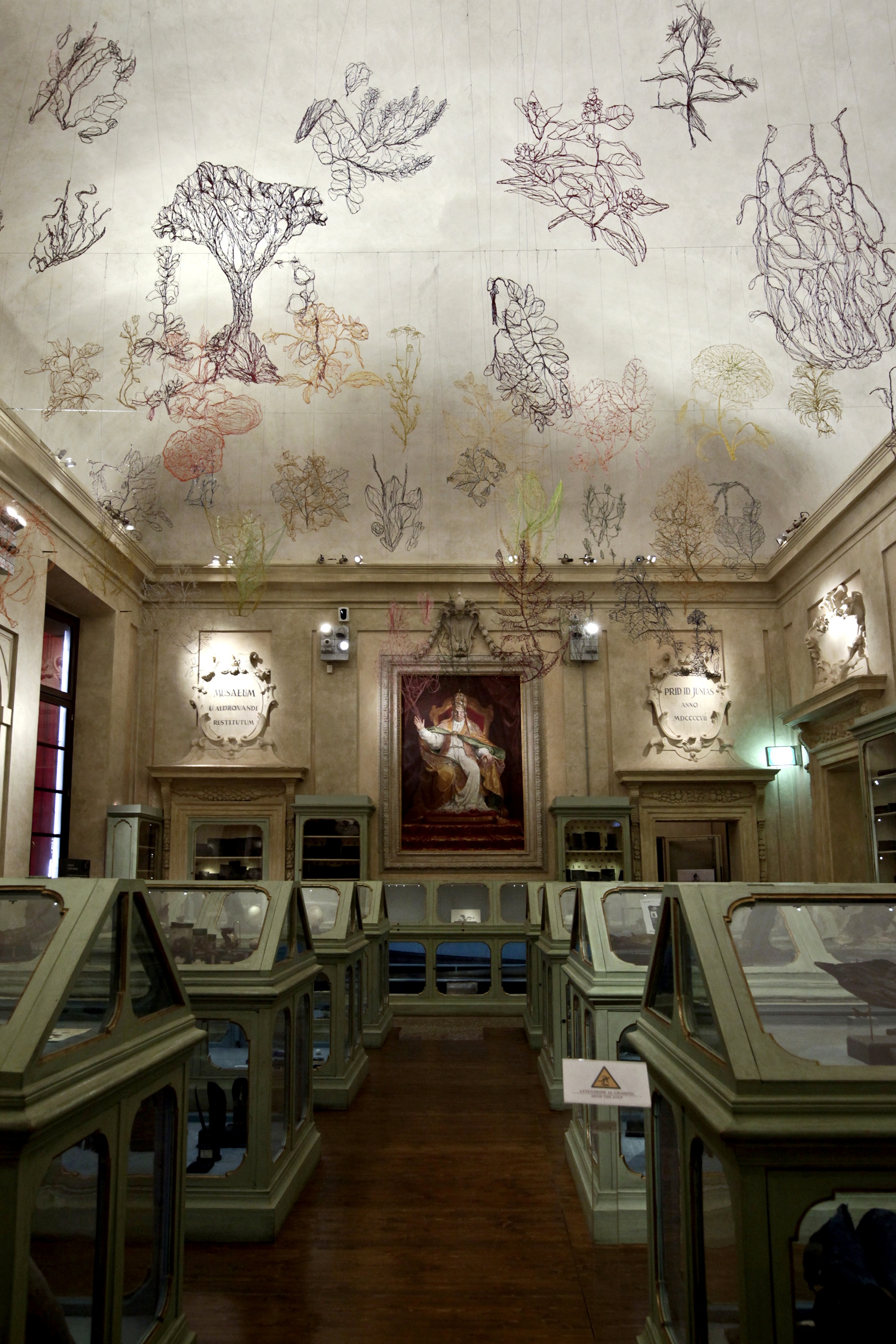Introducing the artist-in-residence at the Linden-Museum: Marina Gasparini
Marina Gasparini lives and works in Bologna, Italy. In the last two decades, her practice has been centred on threads and textiles both as a medium and as a source of inspiration. She uses twisted, interwoven and stratified threads to evoke networks of relations that connect people, objects, species and spaces. As part of her residency at the Linden-Museum from June to July 2023 within the framework of the project “Taking Care”, she is researching objects from the Oceania collection, mainly with the aim of understanding natural materials of both plant and animal origin that were used to produce them. She will hold a workshop series as part of the residency where participants will engage with plant and animal species occurring in the collection by collectively creating thread drawings and ‘fossils’ inspired by natural historical drawings documenting these species. Marina also plans to create an original work, including a performance, drawing on her artistic engagements with the museum collection.
Q and A with the Artist (conducted by Nandini
Thilak)
Have you worked with an ethnographic museum before?
I have not worked with an ethnographic museum but I have worked in the past with University collections in Italy, such as the Palazzo Poggi in Bologna. At the Palazzo Poggi, I was interested in the natural history collection. My installation at the Aldrovandi Hall there was inspired by wood block prints of plants from the collection. Ulisse Aldrovandi, born in Bologna in the 16th century, is a well-known naturalist and botanist whose collections are housed at the Palazzo Poggi.

Your project at the Linden-Museum too partially began with an interest in plant-derived materials represented in objects in the collection. How did you get interested in botanical themes?
I first got interested in plants through my work with textile materials—I have been working with textiles and thread as an artistic material for the last 20 years. So, I first got interested in plants in relation to textile culture. The connections between nature and economy interested me. A project I did at the Civic Museum in Modena for instance was inspired by plants used as sources of textile dye. I created it against the context of the count Luigi Alberto Gandini textile collection, an important 19th century collection of textile samples and patterns.
What attracted you to the Oceania collection at the Linden-Museum?
I was really attracted by the objects, especially the evidence of nature present in them as well as the sophistication of techniques used to weave threads and fibres. The presence of nature is very clear in them-you can immediately recognise the natural materials.
Are there any objects from the Oceania collection that especially interest you?
I am very interested in objects of everyday use that have deeper meaning in indigenous cultures. One favourite group are combs from the collection. They are simple objects but also hold symbolic importance as bodily decorations, as I have learned from speaking to Ulrich Menter, the Oceania curator at Linden-Museum. Many objects have mythological significance, they hold memories. I am really looking forward to learning more about these aspects of the objects during my residency.


How do you see the relationship between cultural practices and ecological problems?
One thing I have learned in the course of my work is that human use of an animal or plant, as represented in these objects, was essential to the survival of many species. I do not see the use of a whale bone or a shell in these objects as cruelty. The interdependence between human and non-human species that these objects represent is important to the survival of those species. When humans have a use-relationship to a species we tend to care for their ecosystems. It is when these relationships of use and dependence breakdown that a lot of species extinctions start, because we then take over their spaces for our purposes and do not care for those species anymore.
You are quite interested in botanical knowledge produced in the colonial period about plants. How do you approach this history?
The history of colonialism is to me synonymous with the history of plantations. We often hear about European botanists who travelled the world for scientific purposes collecting and documenting plants. I have learned that this history of scientific exploration was deeply connected to the commercial exploitation of species so it was not purely a scientific curiosity.
What do you look forward to during your residency at the Linden-Museum?
Well, each residency is an intense period that changes your mind. It is always a surprise! Personally, I will probably use the residency to return in my work to the dimensions of a book. The book is a form that has been very important in natural history—think of herbariums and atlases. They are like portable museums. Exploring the book form in my work is the challenge I set for myself for the residency.